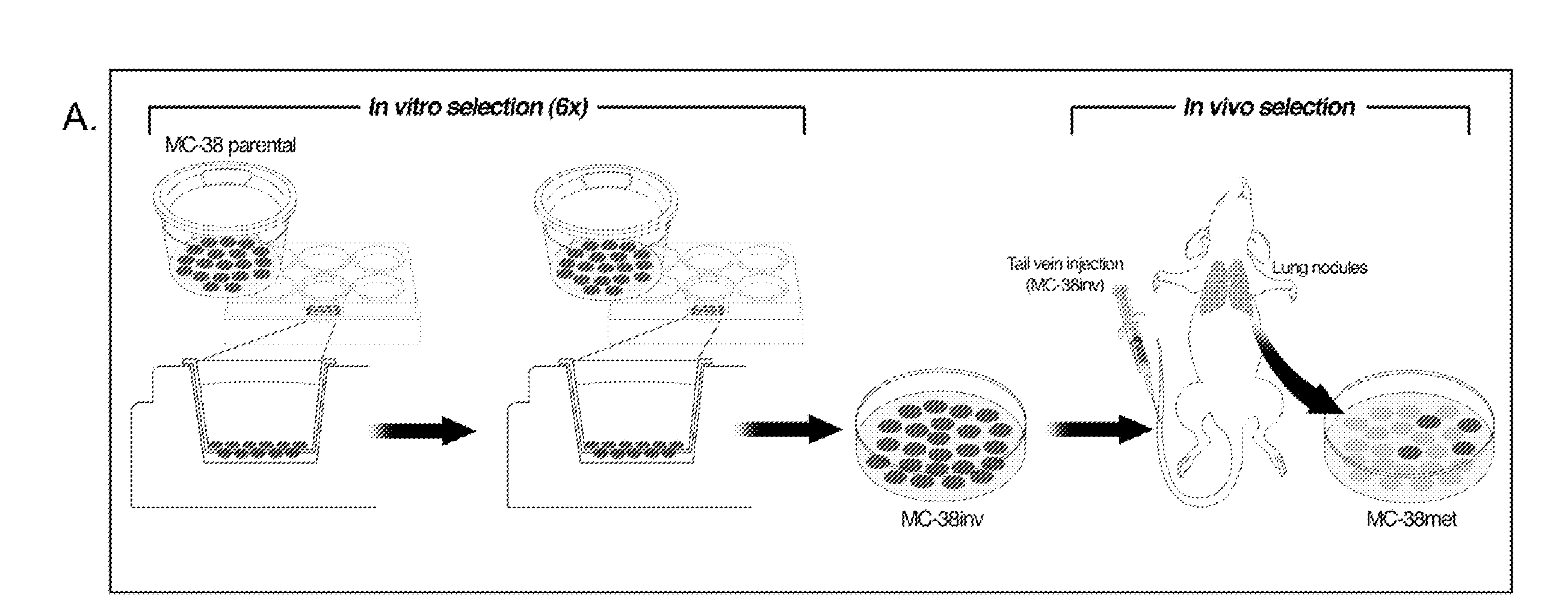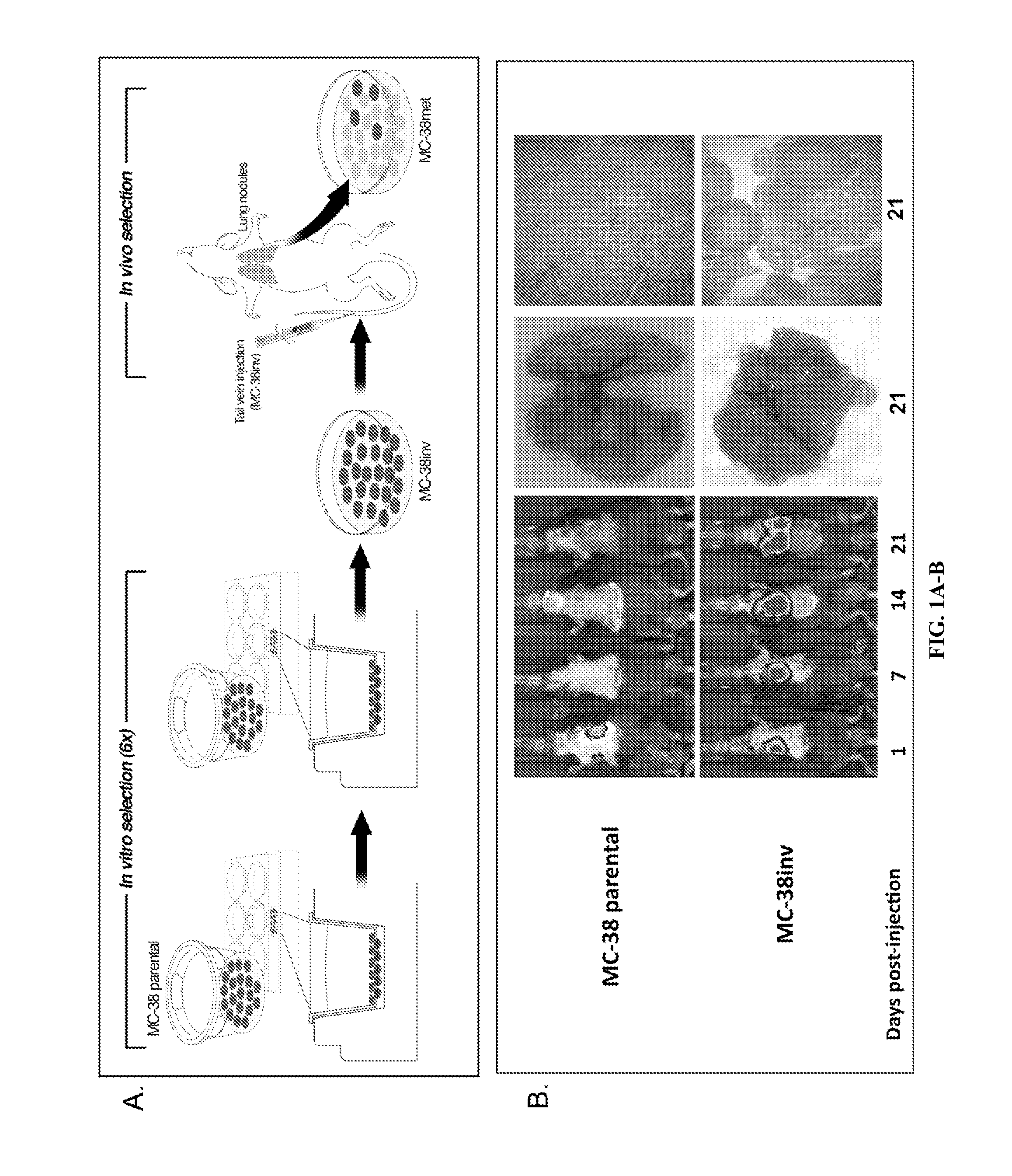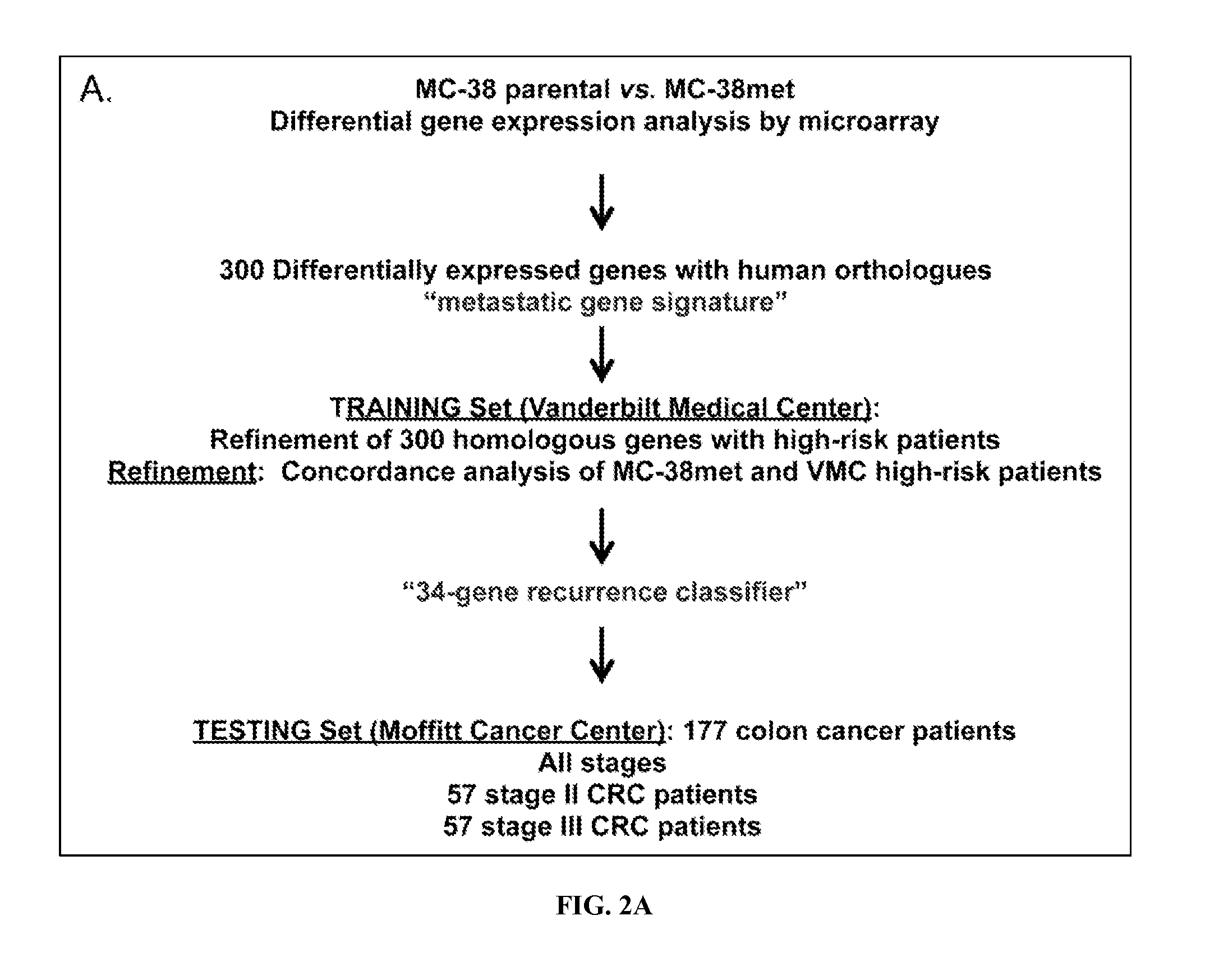Gene Prognosis Predictor Signature for Colorectal Carcinoma
- Summary
- Abstract
- Description
- Claims
- Application Information
AI Technical Summary
Benefits of technology
Problems solved by technology
Method used
Image
Examples
example 1
Materials and Methods
[0197]Cell Culture and Mouse Model. MC-38 mouse adenocarcinoma cells were obtained from the American Type Culture Collection (ATCC) and cultured (Lafreniere and Rosenberg, 1986). MC-38 cells were transfected with firefly luciferase gene in pGL3 basic (Promega, Madison, Wis.) and selected in 0.5 mg / mL G418 (Invitrogen, Carlsbad, Calif.). To enrich for invasive MC-38 cells, 7.5×105 cells were seeded onto 6-well, 8.0 μM pore transwell polycarbonate membrane inserts (Costar, Cambridge, Mass.) coated with 2.5 mg / mL matrigel and incubated with serum-free DMEM in the upper chamber and complete DMEM in the bottom well. After 12 hours, invading cells were aseptically harvested by brief, gentle trypsinization and transferred to new dishes (Poste et al., 1981). Invading cells (Lafreniere and Rosenberg, 1986) were collected after six serial passages through matrigel-coated Boyden chambers (Poste et al., 1981). Cells collected after the 6th passage were designated “MC-38inv”...
example 2
Results
[0213]Development of an immunocompetent mouse model of colon cancer metastasis. Tumors are a heterogeneous mixture of cells with differing invasive and metastatic potential. Therefore, the inventors used a conventional invasion assay to enrich for a sub-population of highly invasive MC-38 mouse colon cancer cells (FIG. 1A; MC-38inv). Following six serial passages through matrigel, MC-38inv cells were 6-fold more invasive than MC-38 parental cells. In vivo, MC-38inv cells were significantly more metastatic to the lung as compared with MC-38 parental cells after tail vein injection (FIG. 1B; Table 5, p<0.001). Lung tumors derived from MC-38inv cells were cultured to derive a highly metastatic cell line, MC-38met. These MC-38met cells were injected into the tail vein and spleen and produced extensive metastatic tumors in the lung and liver respectively (see FIG. 5 and Table 6).
TABLE 5Quantification of lung nodules from MC-38 parental and MC-38 inv cellsMC-38 ParentalMC-38 inv(n ...
example 3
Discussion
[0224]In the present study, the biology of colon cancer metastasis was modeled in immunocompetent mice to develop a gene expression signature that discriminates recurrence and survival outcomes in human colon cancer patients. Stage II and stage III patients bearing primary colon cancers that reflected this metastasis gene expression pattern were at greater relative risk of recurrence than those who did not (hazard ratios of 13.1 and 4.7, respectively). This gene expression profile, tested with a recurrence scoring method, performed independently of conventional pathological staging.
[0225]Perhaps most importantly, this recurrence score identifies stage II patients at high risk of recurrence and death and stage III patients at low risk of recurrence and death. The inventors have identified a subset of high-risk stage II patients that that may benefit from adjuvant therapy and a subset of low-risk stage II patients who will have an excellent outcome after surgical resection w...
PUM
| Property | Measurement | Unit |
|---|---|---|
| Fraction | aaaaa | aaaaa |
| Fraction | aaaaa | aaaaa |
| Fraction | aaaaa | aaaaa |
Abstract
Description
Claims
Application Information
 Login to View More
Login to View More - R&D
- Intellectual Property
- Life Sciences
- Materials
- Tech Scout
- Unparalleled Data Quality
- Higher Quality Content
- 60% Fewer Hallucinations
Browse by: Latest US Patents, China's latest patents, Technical Efficacy Thesaurus, Application Domain, Technology Topic, Popular Technical Reports.
© 2025 PatSnap. All rights reserved.Legal|Privacy policy|Modern Slavery Act Transparency Statement|Sitemap|About US| Contact US: help@patsnap.com



